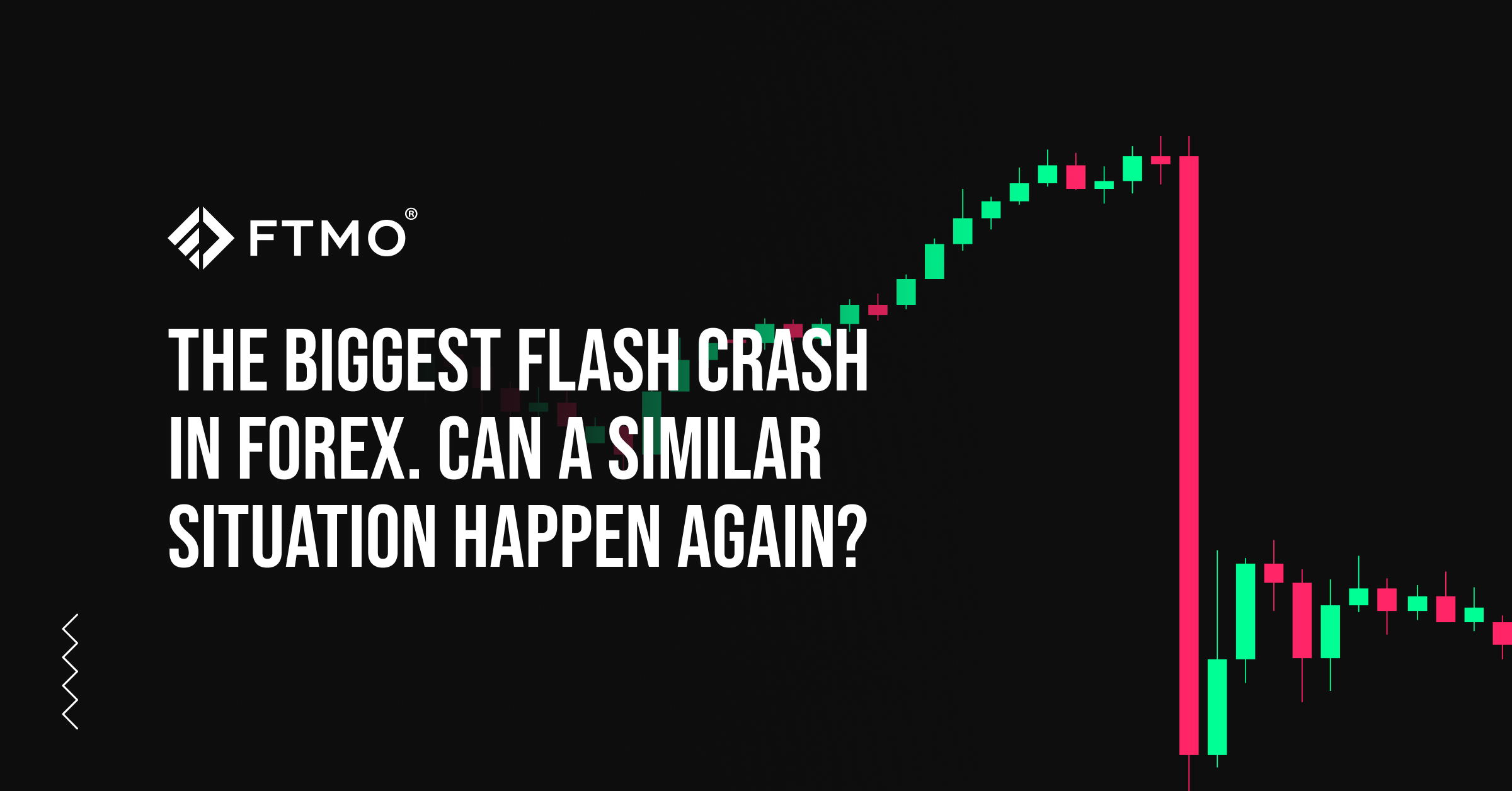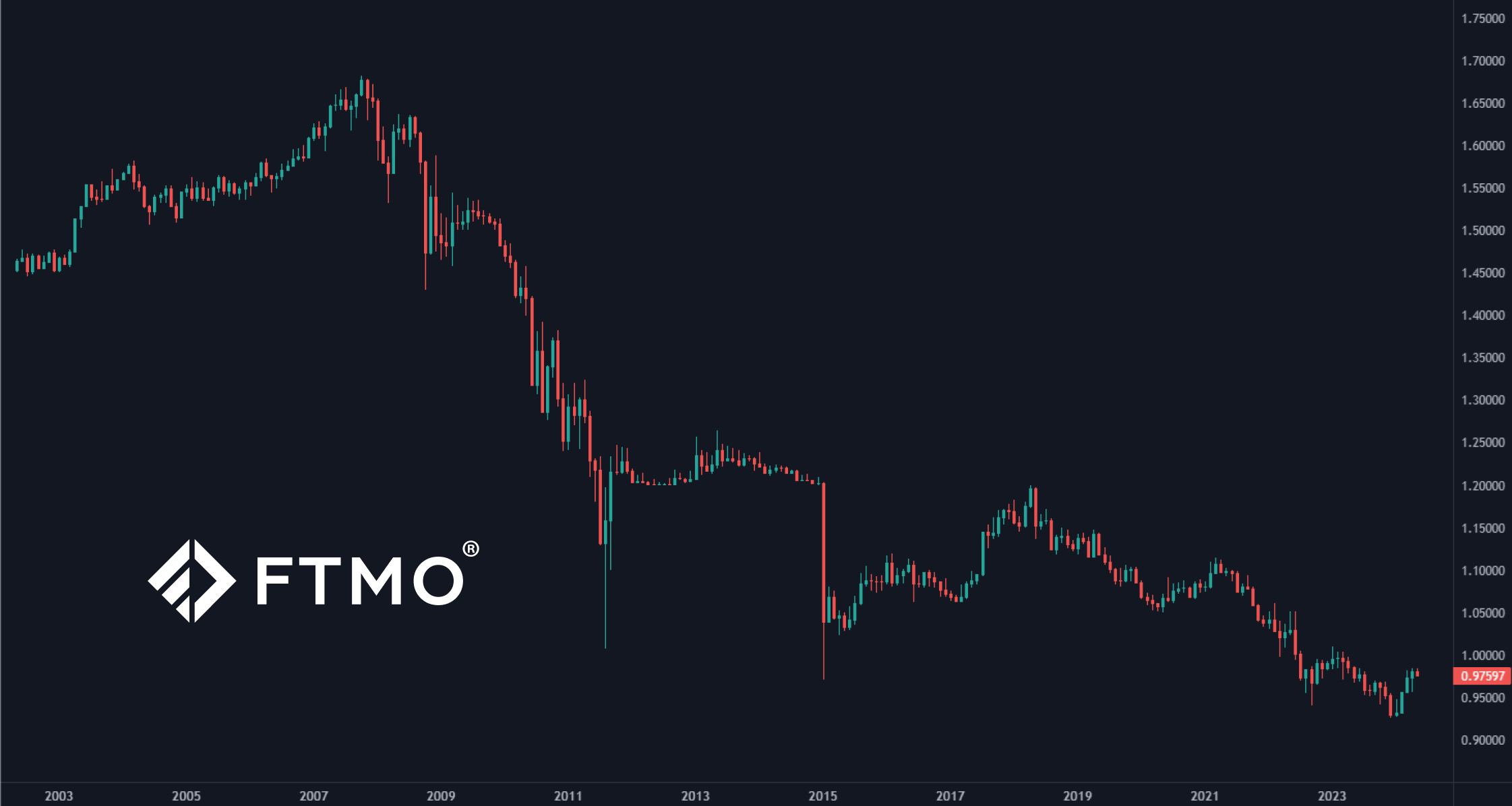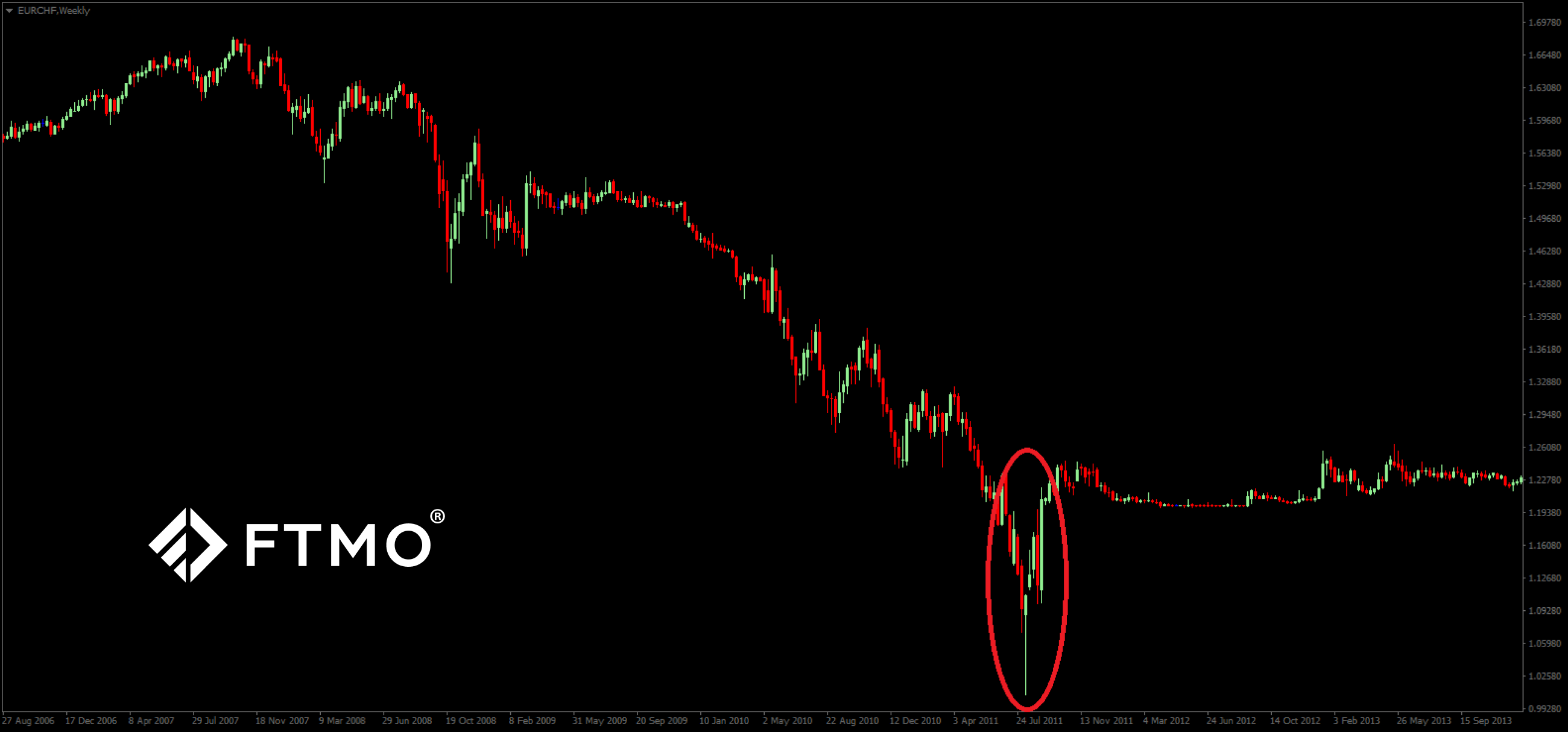
The biggest Flash Crash in Forex. Can a similar situation happen again?
At the beginning of 2015, Forex traders experienced one of the wildest events in the EURCHF currency pair. What actually led the Swiss National Bank to cause the biggest flash crash in forex history? And can a similar event happen again in the market?
What the Swiss National Bank (SNB) did in 2015 was an unprecedented move that shocked all market participants. What was particularly striking was the fact that an event that ultimately led to billions of dollars in losses was caused by a central bank whose primary task should be to maintain price stability while taking economic developments into account.
A good beginning
Switzerland is one of the few countries in Europe that still retains its currency, which allows the SNB to influence the aforementioned price stability in the country and thus partially "control" economic development in the country. As an export-oriented economy, the appreciation of the euro against the Swiss franc in the first years after the introduction of the European joint currency had a positive effect on the country's exports, which reached record levels.
The chart below shows that by October 2007, the euro had appreciated against the Swiss franc, reaching a value of 1.6829. However, in the second half of 2007, the US mortgage crisis began, which eventually turned into a global financial crisis and the biggest economic recession since 1929. Investors around the world reacted in different ways, but one of the typical manifestations of crisis behaviour is the movement of assets to safe havens, including the Swiss franc.

Strong franc, weak economy
As a result, the Swiss franc appreciated significantly against the European currency, with the euro losing up to 36% of its value against the CHF by September 2011. This led to a decline in exports to Eurozone countries and also had a very negative effect on the country's economy, since exports at that time accounted for around 70% of the country's GDP.
In August 2011, after the EURCHF exchange rate approached parity and was around 1.0365, the Swiss National Bank decided to take action. In September 2011, it pegged the Swiss franc to the euro at 1.2000 to help its exporters and economy. As can be seen in the next figure, the exchange rate reached the level of around 1.2000 almost immediately and remained there with slight fluctuations in the following years. It also helped Swiss exports, so everything looked good.

Billions of francs and problems on the way
But to maintain this exchange rate, the SNB had to print incredible amounts of new francs and put them on the market to weaken its currency. Thus, by the end of 2014, total foreign currency reserves amounted to a staggering $480 billion (about 70% of GDP), with the euro accounting for more than 45% of this sum. Worse still, in 2014 the euro itself depreciated significantly against other currencies (and thus also the Swiss franc). As a result, the value of the foreign exchange reserves held by the SNB fell rapidly along with the euro, and the number of critics of currency depreciation increased rapidly again.
Trader optimism as a foreshadowing of disaster
However, the SNB tried to keep the EURCHF exchange rate at 1.2000 and there was no indication of any change in its approach. This was also exploited by Forex traders trying to profit from short-term price gains. Every time the price approached the 1.200 level, they opened long positions, as they counted on the price not going below 1.2000. The situation even seemed to be such that at the end of 2014 the ratio of long to short positions on the EURCHF pair was an extreme 70:1.
Forex without liquidity? Even that is possible
No wonder, then, that when the SNB announced on January 15, 2015 at 4:30 a.m. that it was ending the fixation on the euro, an unprecedented panic broke out on the market. According to FXCM, one of the largest Forex traders at the time, virtually all liquidity was withdrawn by major liquidity providers just one minute after the SNB's announcement.
After five minutes, the situation even looked as if the difference between the quotes of the two liquidity providers was at one point a whopping 5,382 pips (the quotes were 1.1078 and 0.5696, but the volumes were virtually zero). There were even quotes coming from one liquidity provider that differed by 4,500 pips within seconds (first 0.9550, then 0.5000 a second later). The situation did not return to normal until about an hour later, but by then traders and brokerage firms were counting losses that ran into the hundreds of millions of dollars. The Swiss franc appreciated by more than 20% in a few minutes and the price finally "settled" slightly below parity.

Traders in loss, brokers insolvent
As an unprecedented lack of liquidity prevailed in the markets, traders who had open long positions experienced extreme losses within minutes. Many traders even ended up with negative balances and owing their brokers a lot of money. This was due to the high leverage commonly used in Forex trading and the fact that with such a large number of long positions with Stop Loss orders activated, it was impossible to find a counterparty. These then virtually stopped working, as did margin calls from brokers.
As a result, FXCM lost $225 million (and the share price fell 90%), Citibank reported a loss of $150 million, and Alpari UK and EXCEL Markets went into insolvency because they were unable to cover their clients' losses. The day after the event, client losses in the Forex market were estimated at more than $400 million.
The mood of investors around the world is quite aptly illustrated by a tweet from Zero Hedge below, which reported on a planned press conference by the head of the SNB, saying that he should wear a bulletproof vest.
SNB PRESIDENT JORDAN TO HOLD PRESS BRIEFING AT 1:15PM IN ZURICH. Better have a bulletproof vest
— zerohedge (@zerohedge) January 15, 2015
The SNB also suffered big losses due to the appreciation of the franc, reporting a loss of 47.2 billion francs on foreign exchange transactions. The strengthening of the Swiss currency also let to a 2.6% drop in exports from the country, and the event also had a negative impact on tourism and retail business.
Why the SNB took such an unprecedented step is debated, but the situation was already almost untenable for the SNB at the time of the easing. The ECB was expected to launch quantitative easing, elections were approaching in troubled Greece and pressure was certainly mounting from interest groups who were not comfortable with the situation at the time.
In any case, it is good to have this event as a strong deterrent. Although such events are not common in Forex and the likelihood of a similar event happening in the near future is quite low, your caution is certainly in order. When opening positions, always keep in mind the possibility of sudden events (even if the probability of them is very small) that can move the market more than your large position can handle. In short, proper risk management and discipline are the basics you should keep in mind whenever you open a trade. Trade safely!
About FTMO
FTMO developed a 2-step Evaluation Process to find trading talents. Upon successful completion you can get an FTMO Account with a balance of up to $200,000. How does it work?.









